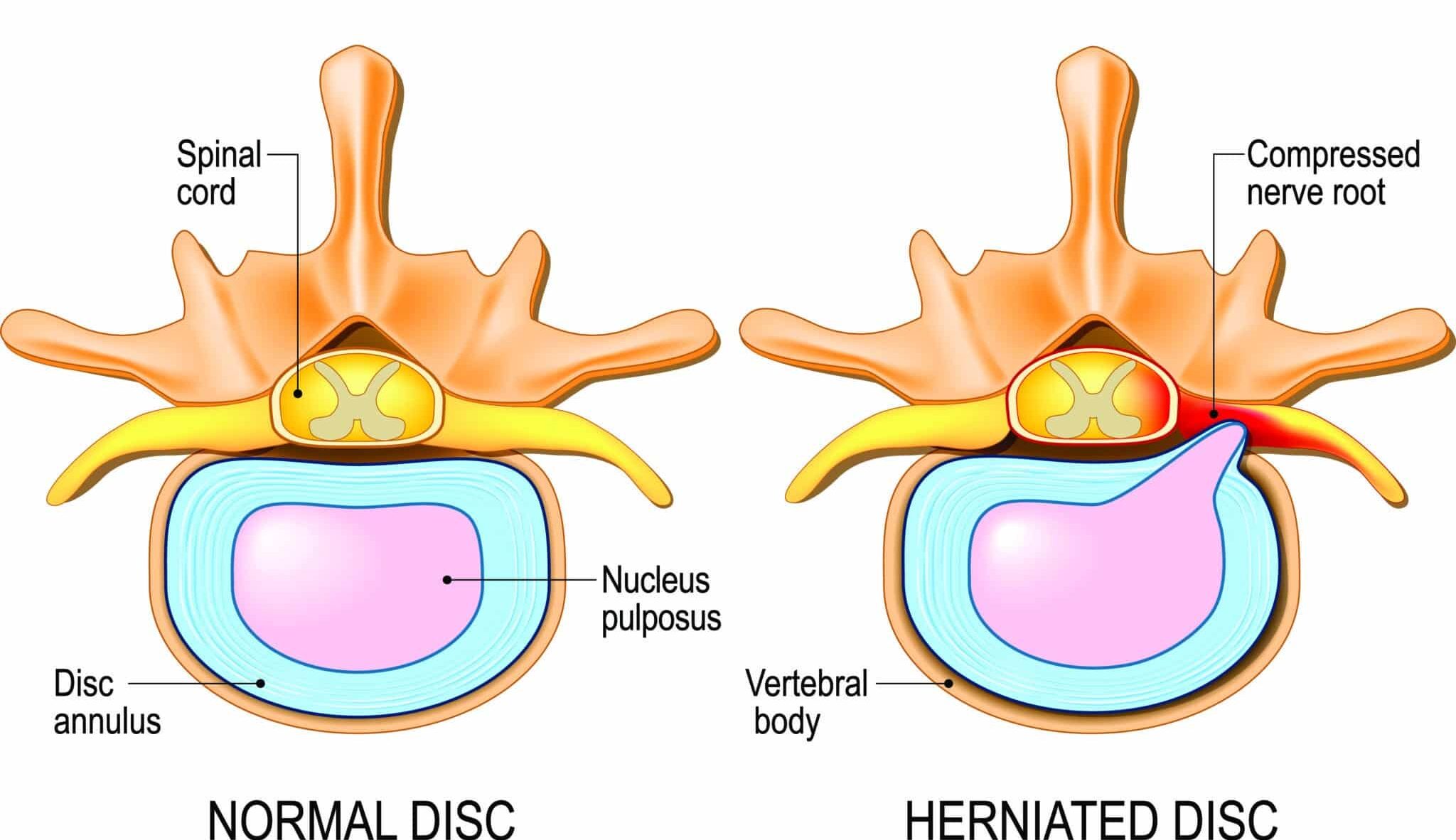An intervertebral disc is a structure located between adjacent vertebrae of the spine. It consists of a tough outer layer called the annulus fibrosus and a gel-like center called the nucleus pulposus. The intervertebral disc acts as a cushion, allowing the spine to bend and twist without damaging the vertebrae. If the disc is damaged or degenerates, it can lead to pain, stiffness, and other spinal problems.
Structure
The intervertebral disc is composed of two main parts: the annulus fibrosus and the nucleus pulposus.
- Annulus fibrosus: This is the outer layer of the intervertebral disc, made up of tough, fibrous cartilage. The annulus fibrosus consists of a series of concentric rings, called lamellae, that surround the nucleus pulposus. The lamellae are made up of collagen fibers arranged in different directions, which help to provide strength and stability to the disc.
- Nucleus pulposus: This is the inner layer of the intervertebral disc, made up of a gel-like substance that helps distribute pressure across the disc. The nucleus pulposus is primarily composed of water, collagen, and proteoglycans, which help to give it its elastic properties. The nucleus pulposus is also rich in nutrients, which helps to nourish the surrounding tissues.
Together, the annulus fibrosus and nucleus pulposus form a complex structure that allows the intervertebral disc to withstand pressure, absorb shock, and provide flexibility to the spine.
Function
The intervertebral disc serves several important functions in the spine:
- Shock absorption: The intervertebral disc acts as a shock absorber, cushioning the spine and protecting it from damage during daily activities such as walking, running, and jumping.
- Load-bearing: The intervertebral disc supports the weight of the upper body and helps distribute it evenly across the spine, preventing excessive stress on any one vertebra.
- Flexibility and mobility: The intervertebral disc allows the spine to move in different directions, providing flexibility and mobility to the spine. This flexibility is important for daily activities such as bending, twisting, and reaching.
- Spacing of vertebrae: The intervertebral disc helps maintain the spacing between adjacent vertebrae, preventing them from compressing on each other and causing nerve compression or other spinal problems.
- Nutrient supply: The intervertebral disc contains a network of blood vessels and nerves that provide nutrients to the surrounding tissues. This is important for maintaining the health and function of the spine.
Overall, the intervertebral disc is a crucial structure in the spine, providing support, flexibility, and protection to the spinal column.
Disorders of intervertebral discs
There are several problems that can affect the intervertebral discs:
- Herniated disc: This occurs when the inner nucleus pulposus ruptures through the outer annulus fibrosus and compresses nearby nerves. Symptoms can include pain, numbness, and weakness in the arms or legs.
- Degenerative disc disease: This is a condition in which the intervertebral discs gradually degenerate over time, losing their elasticity and becoming less effective at absorbing shock. This can lead to pain, stiffness, and reduced mobility in the spine.
- Discitis: Discitis is an infection of the intervertebral disc, usually caused by bacteria. This can cause pain, fever, and spread to other parts of the spine.
These are just a few examples of problems that can affect the intervertebral discs. Treatment for disc-related problems may include physical therapy, medication, injections, or in some cases, surgery.
